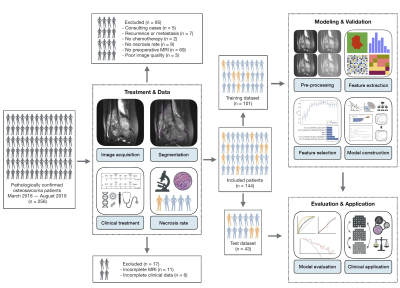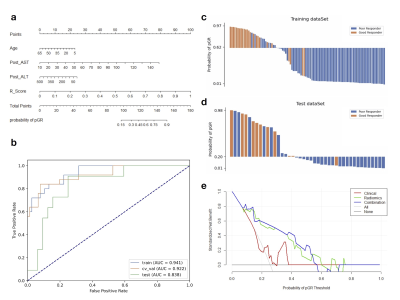Chengxiu Zhang1, Jingyu Zhong2, Yangfan Hu3, Jing Zhang1, Liping Si2, Yue Xing2, Jia Geng3, Qiong Jiao4, Huizhen Zhang4, Weiwu Yao2, and Guang Yang1
1Shanghai Key Laboratory of Magnetic Resonance, East China Normal University, Shanghai, China, 2Department of Imaging, Tongren Hospital, Shanghai Jiao Tong University School of Medicine, Shanghai, China, 3Department of Radiology, Shanghai Jiao Tong University Affiliated Sixth People’s Hospital, Shanghai, China, 4Department of Pathology, Shanghai Jiao Tong University Affiliated Sixth People’s Hospital, Shanghai, China
1Shanghai Key Laboratory of Magnetic Resonance, East China Normal University, Shanghai, China, 2Department of Imaging, Tongren Hospital, Shanghai Jiao Tong University School of Medicine, Shanghai, China, 3Department of Radiology, Shanghai Jiao Tong University Affiliated Sixth People’s Hospital, Shanghai, China, 4Department of Pathology, Shanghai Jiao Tong University Affiliated Sixth People’s Hospital, Shanghai, China
A nomogram combined radiomics features from routinely available T2WI images and clinical variables to predict the response to neoadjuvant chemotherapy in patients
with osteosarcoma was constructed and achieved an AUC of 0.838 (95% CI, 0.700-0.958).

Fig.
1 Study workflow. 144 patients
with osteosarcoma were randomly split into training (n = 101) and test (n = 43)
dataset. Images were segmented manually. Radiomics features were extracted with
Pyradiomics and data in training dataset were balanced with upsampling. Radiomics
model building was performed with Pearson Correlated Coefficient for dimension
reduction, RFE or Relief for feature selection, and SVM or LR for classifier. The
final model was evaluated using ROC analysis, radiomics score plot, calibration
curve, and decision curve analysis.

Fig.
2 Clinical-radiomics combined nomogram and its utility. A nomogram (a)
integrated the radiomics score and three clinical variables was constructed
with an AUC of 0.838 in test dataset (b). The probability of pGR for each
patient in terms of the response status in the training (c) and test dataset
(d) suggested a good accuracy in response prediction. Decision curve analysis
curves for clinical, radiomics and combined model in the whole dataset showed
that the nomogram had a favorable clinical utility (e).
